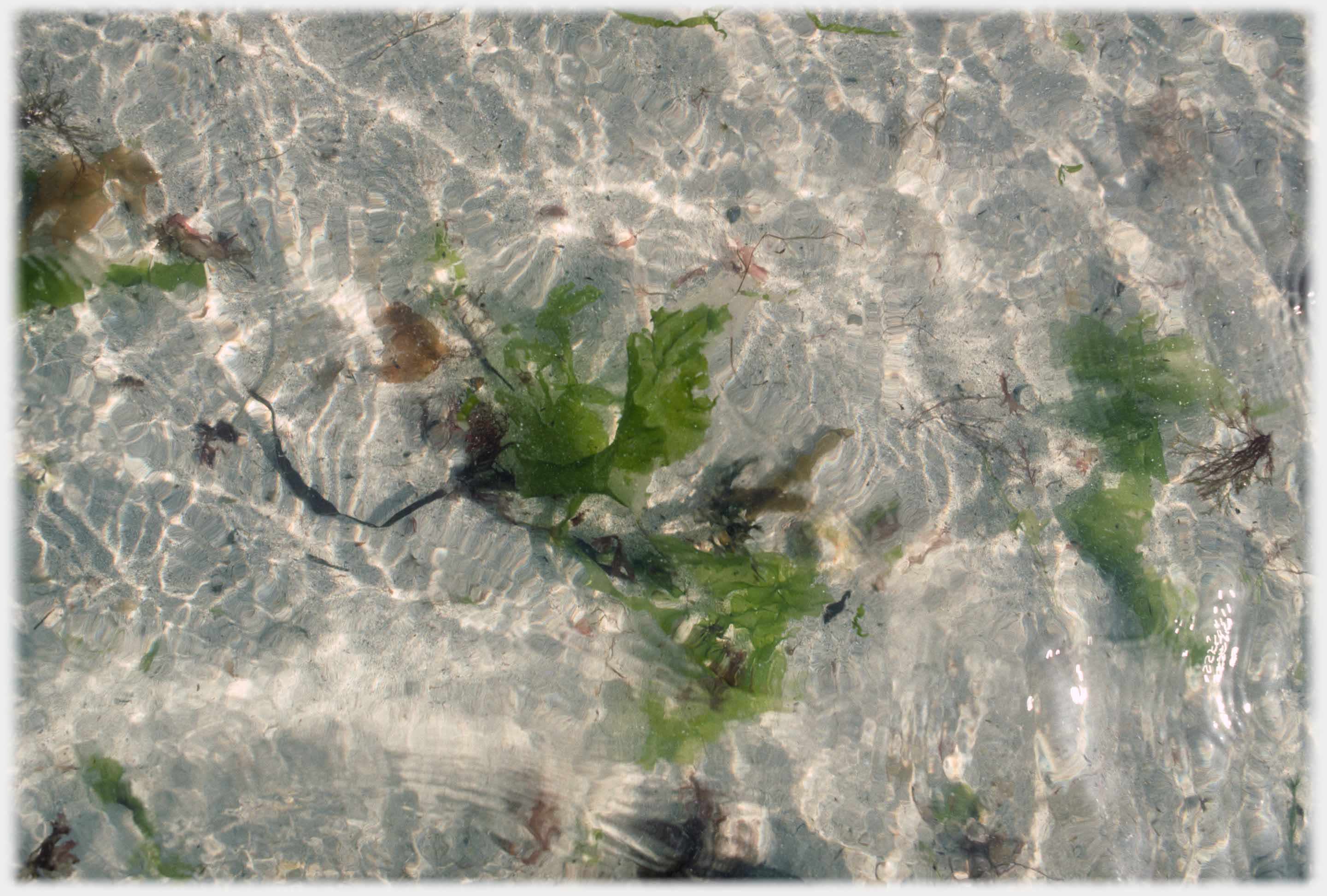 Light catching the translucent waters that surround Mull
The last page gave some general impressions of the Mull landscape. A page on the wildlife of Mull would appropriately add to that, for it is special, and abundant, but I do not have the equipment (and great patience) to make more than a token offering in that direction (see lower down the page). However, taking life in a wider sense one of the most fascinating aspects of Mull is its geology, especially the 'MacCulloch Tree'. This page features that extraordinary fossil, along with some other ways that nature shows herself.
Light catching the translucent waters that surround Mull
The last page gave some general impressions of the Mull landscape. A page on the wildlife of Mull would appropriately add to that, for it is special, and abundant, but I do not have the equipment (and great patience) to make more than a token offering in that direction (see lower down the page). However, taking life in a wider sense one of the most fascinating aspects of Mull is its geology, especially the 'MacCulloch Tree'. This page features that extraordinary fossil, along with some other ways that nature shows herself.
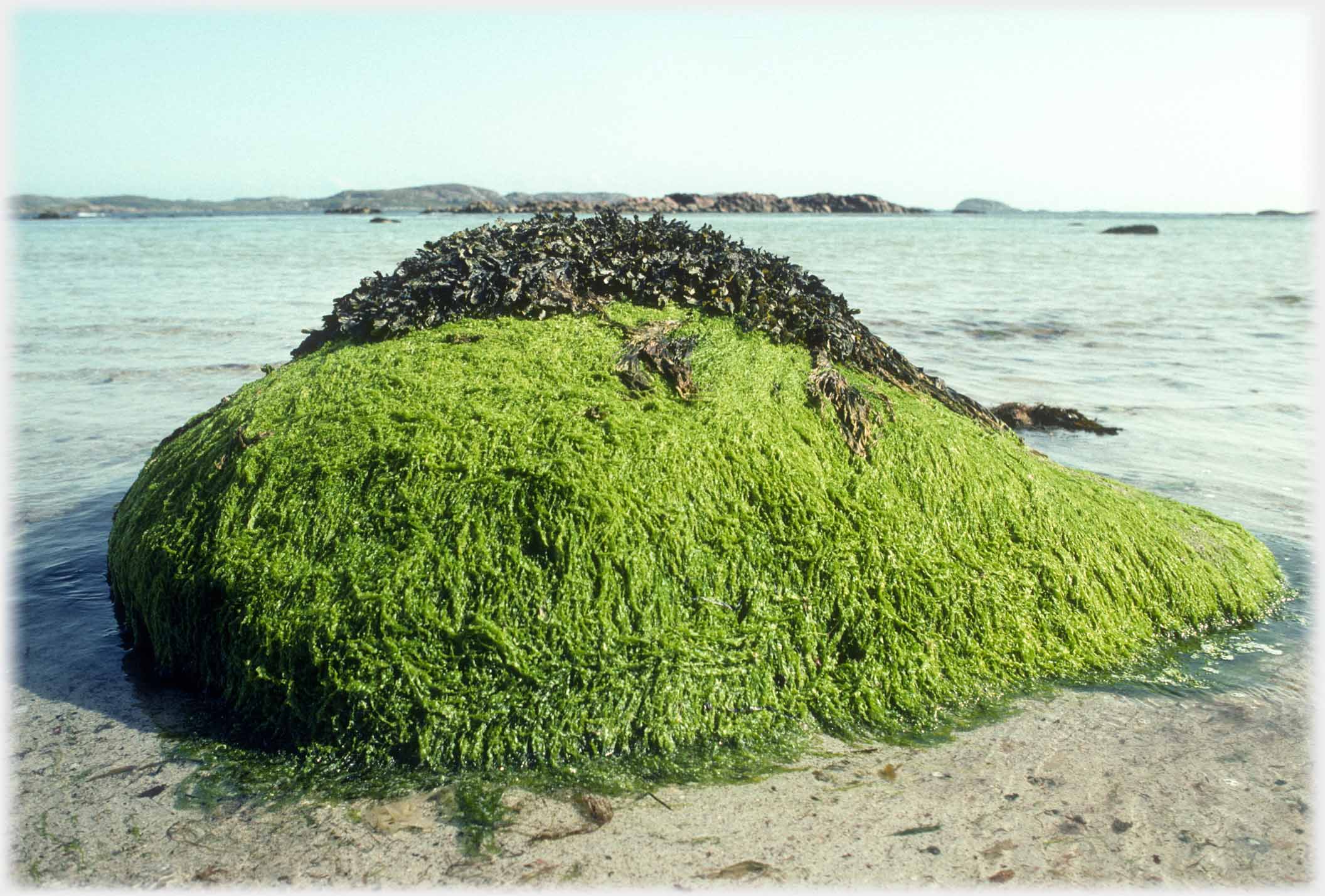 Two boulders clad in two types of seaweed
Two boulders clad in two types of seaweed
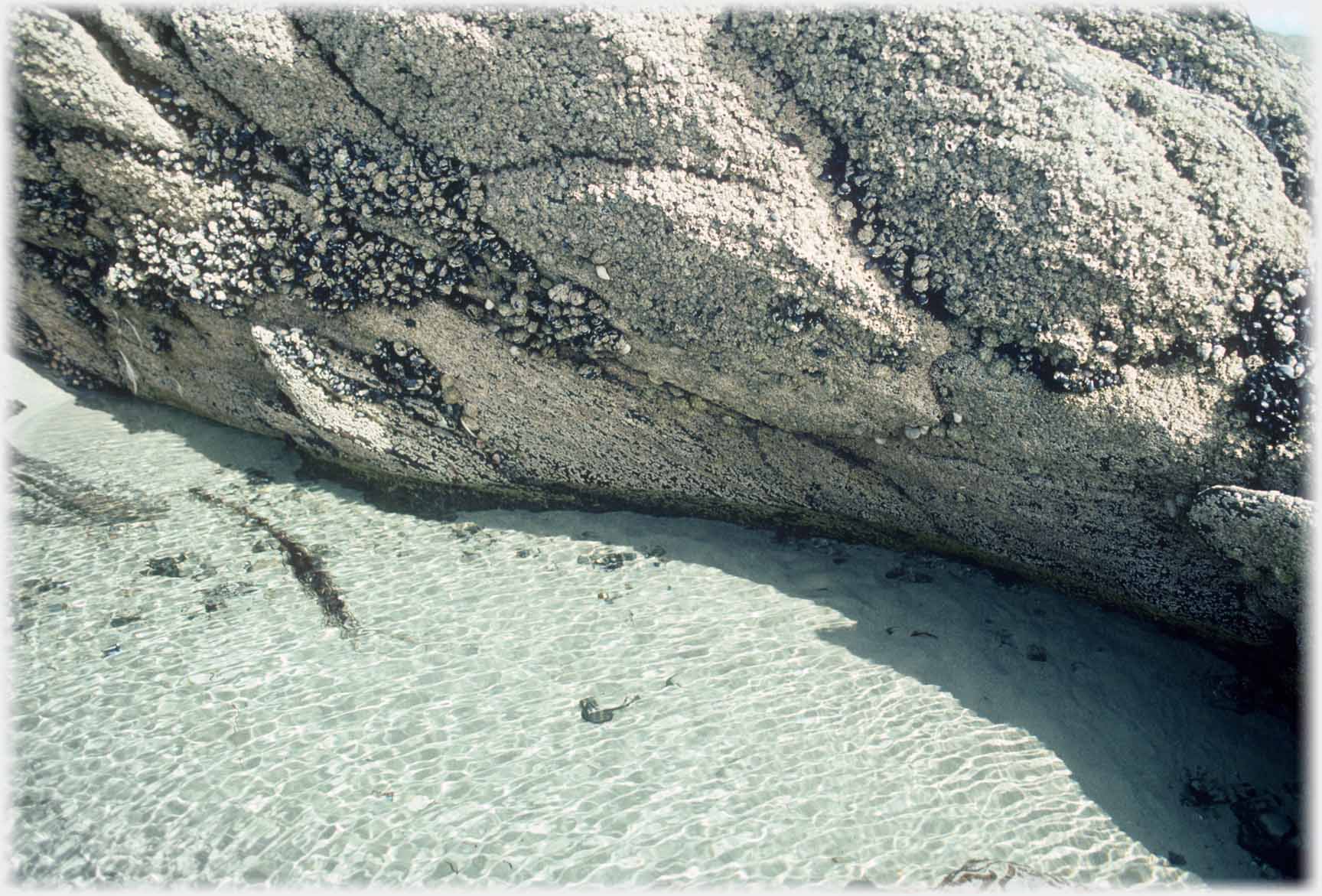 Barnacles cover a rock above shimmering sea. And then
Barnacles cover a rock above shimmering sea. And then
another form of shimmer...
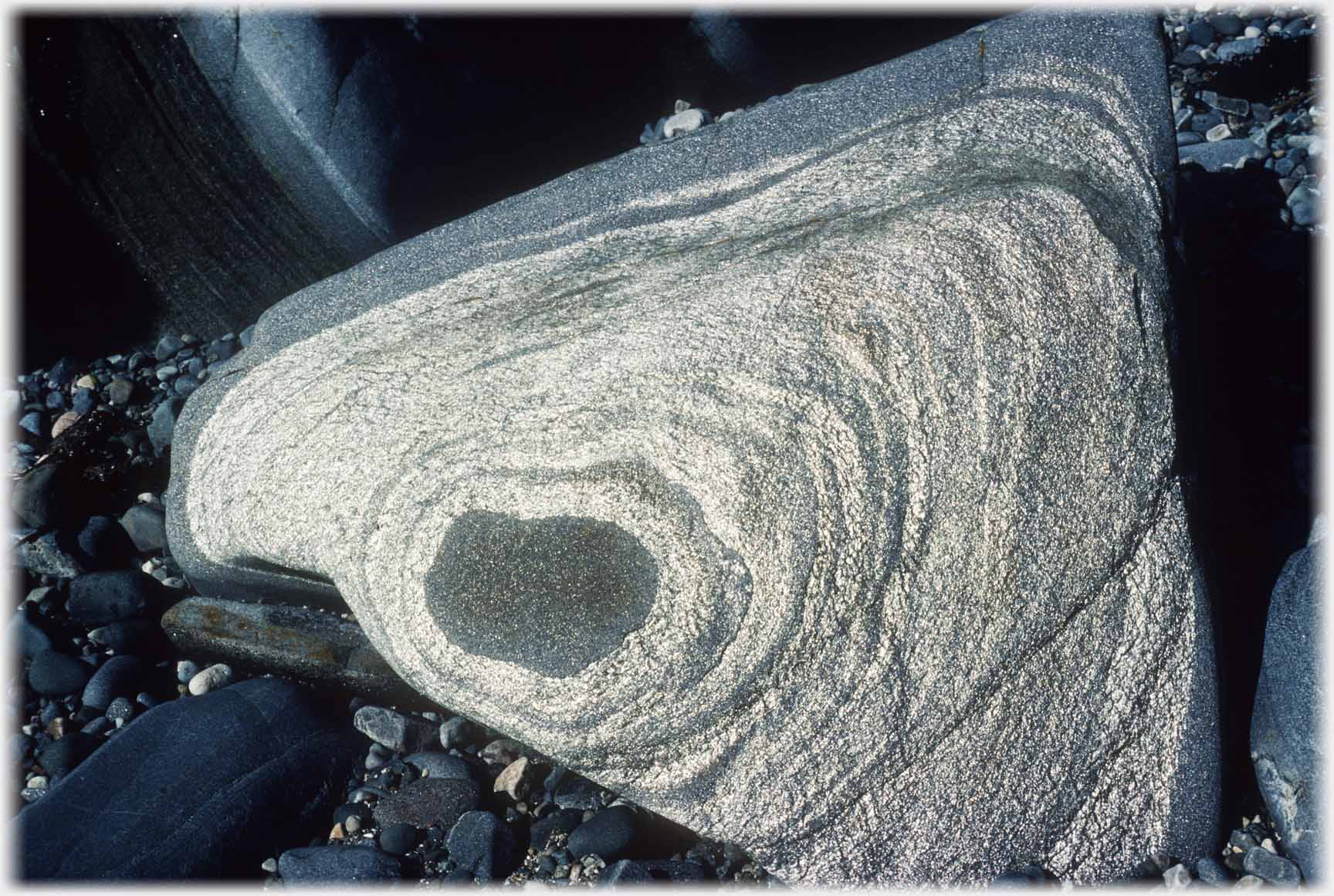 ...is the metallic lustre on this rock, probably
...is the metallic lustre on this rock, probably
speaking of graphite
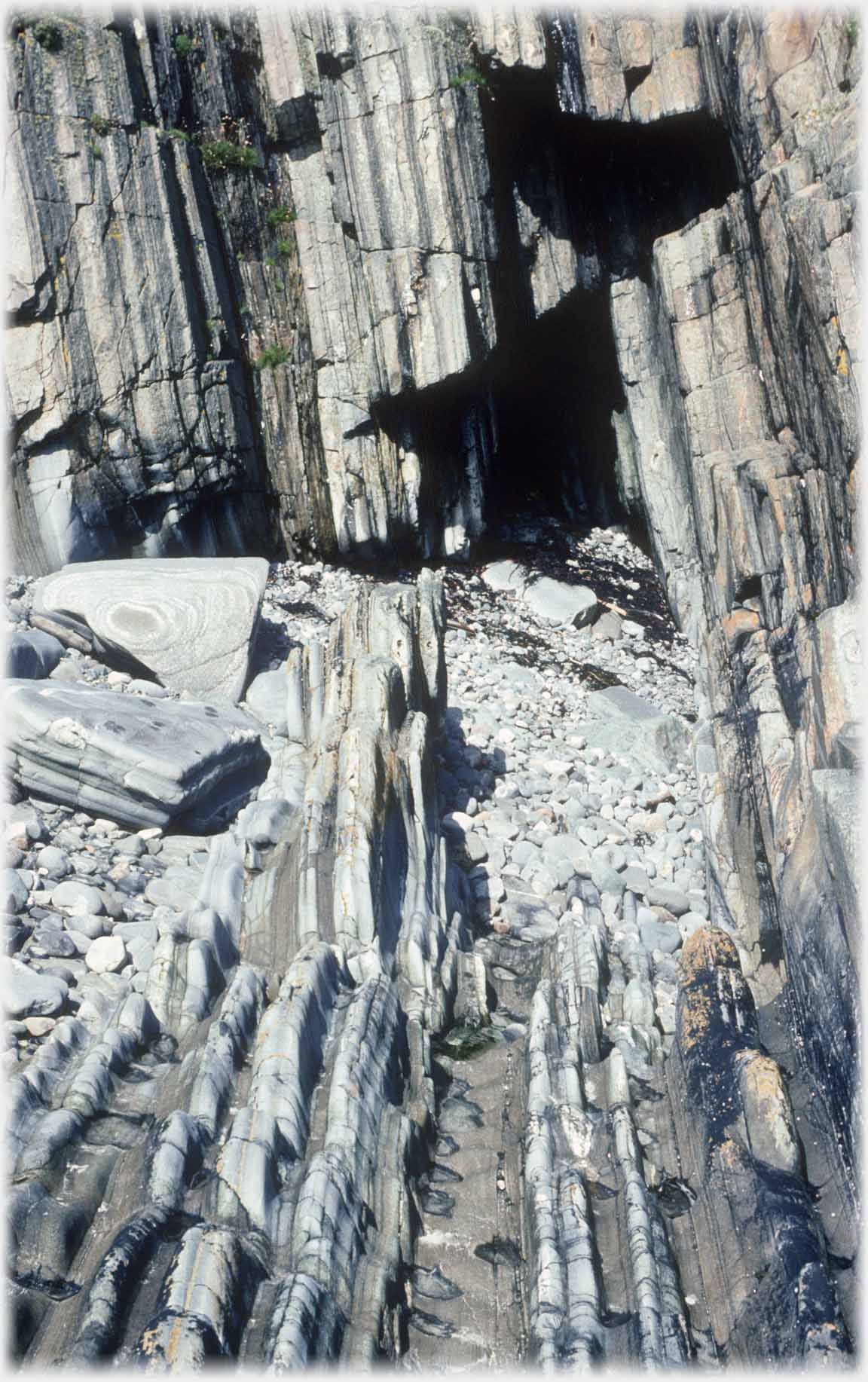 Spectacular geology is Mull's speciality
Spectacular geology is Mull's speciality
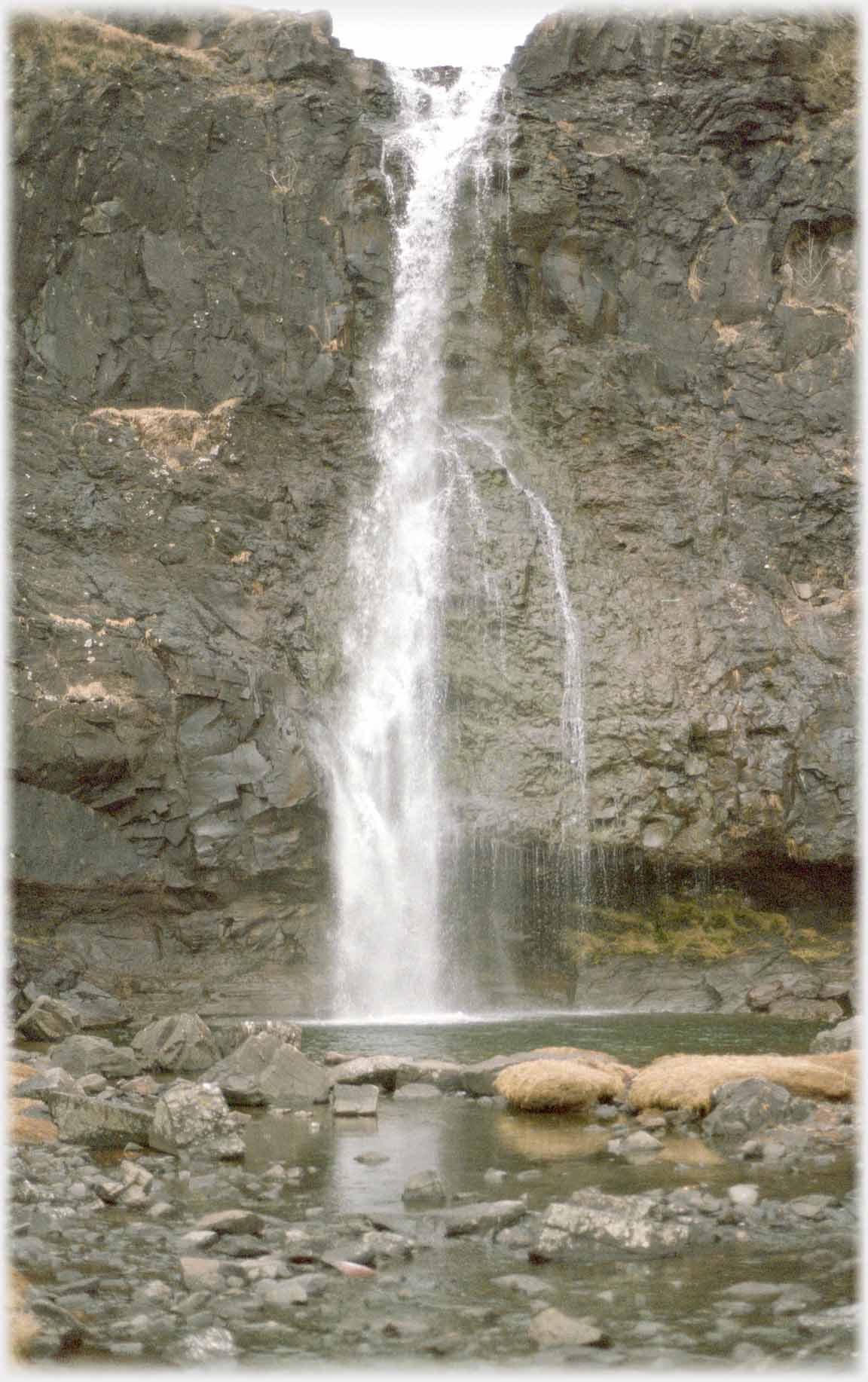 Cliffs defend Ardmeanach Point...
Cliffs defend Ardmeanach Point...
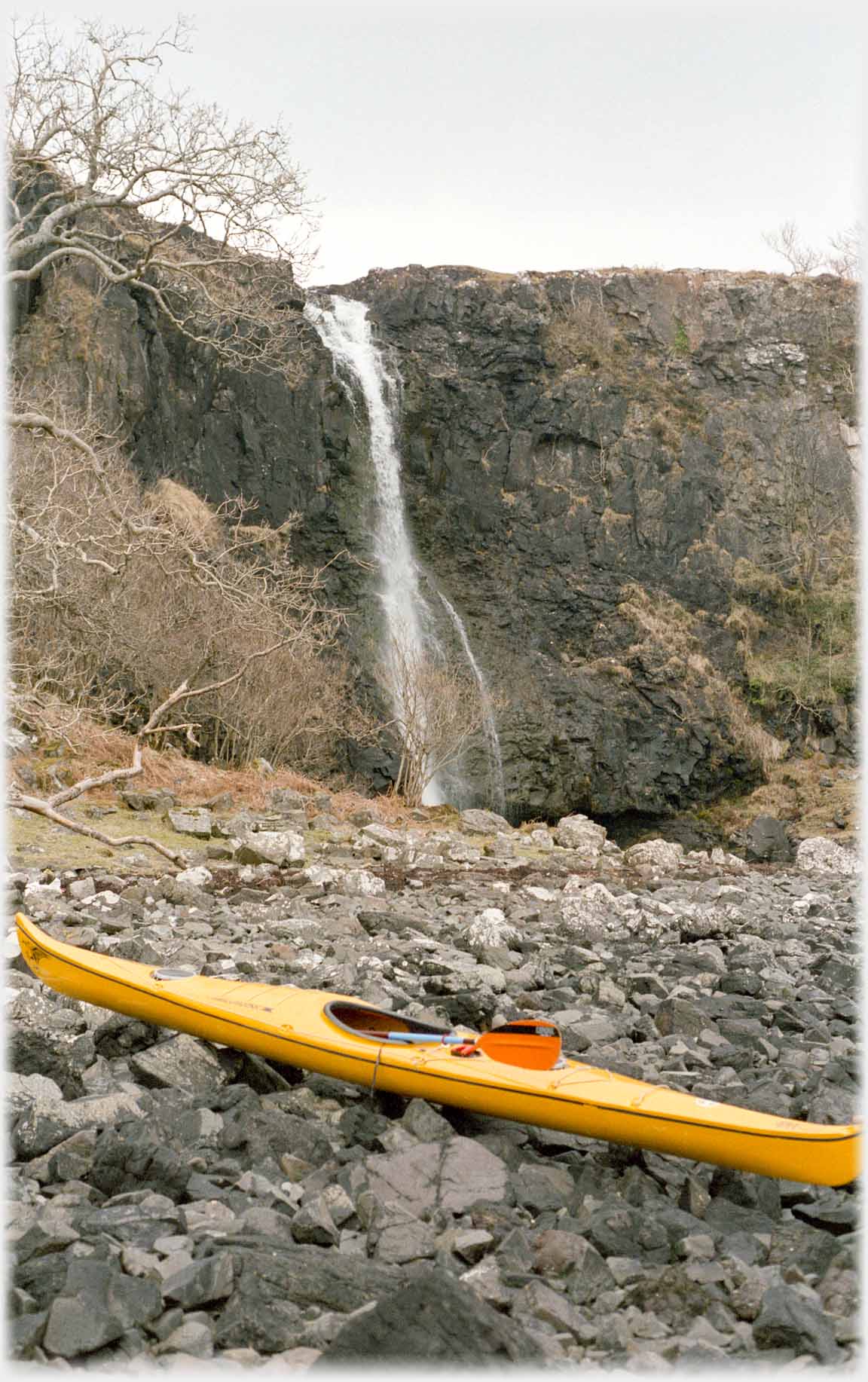 ...making this the easiest way of entry
...making this the easiest way of entry
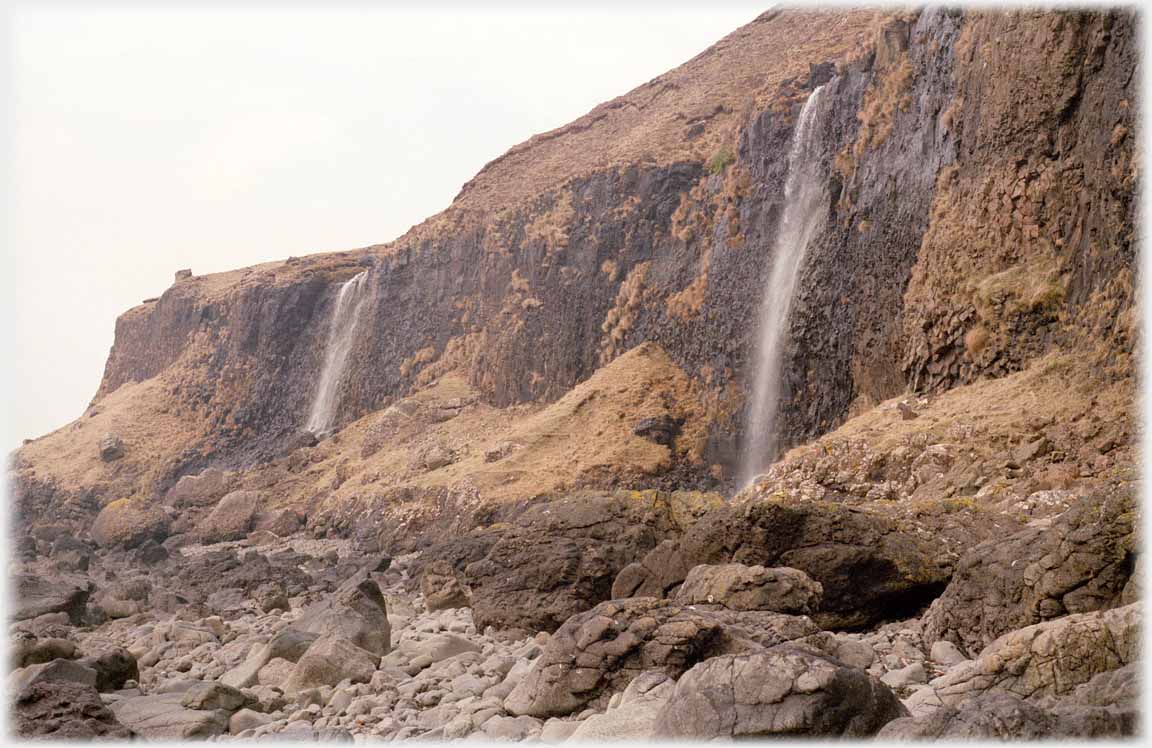 These are the cliffs around
Ardmeanach Point's
nose
These are the cliffs around
Ardmeanach Point's
nose
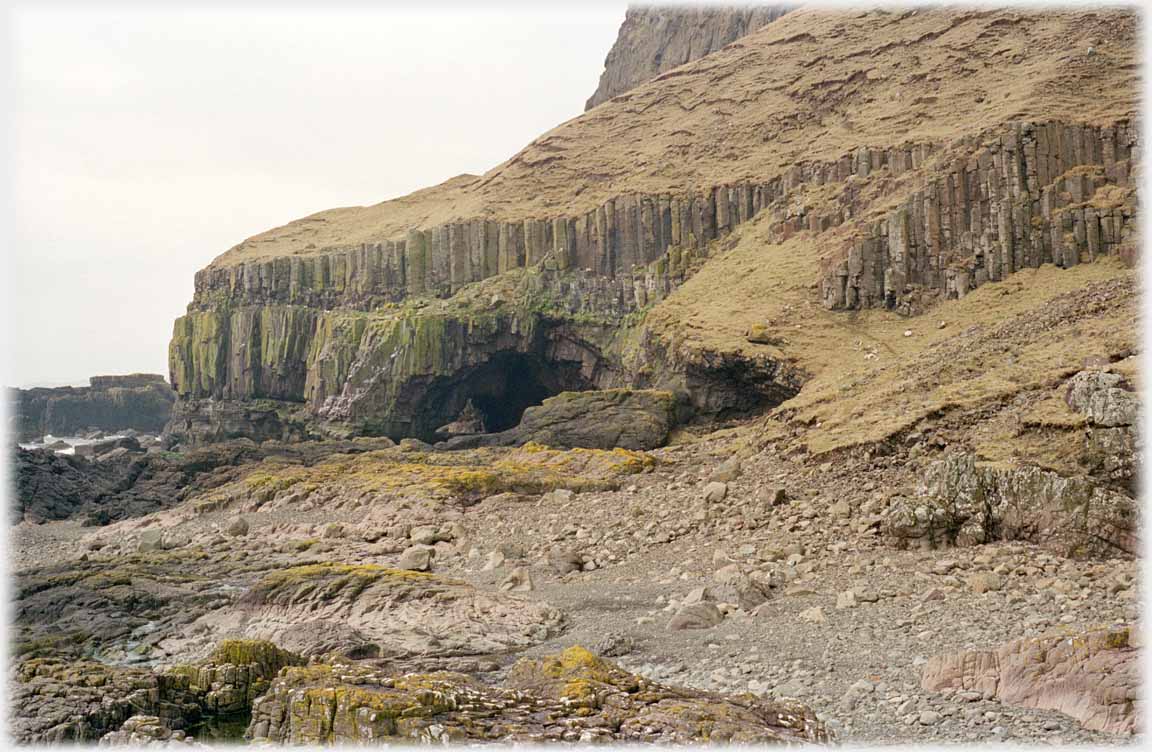 On foot there is a six mile walk to them (plus return)
The highlight of this exceptional area is MacCulloch's fossil tree. This is a 12 metre high cast left in the cliff face from a tree that was vaporised by hot lava some 60 million years ago. So named after John MacCulloch (1773-1835) who identified it in his book published in 1819. What is even more extraordinary about the tree is that part of the charred wood, at the bottom of the trunk, was still in place in the 1980s; it had been protected with a cement cap in Victorian times. This is carefully not mentioned by the National Trust, as souvenir collectors have removed it bit by bit in the time it has been under the Trust's supposed protection!
On foot there is a six mile walk to them (plus return)
The highlight of this exceptional area is MacCulloch's fossil tree. This is a 12 metre high cast left in the cliff face from a tree that was vaporised by hot lava some 60 million years ago. So named after John MacCulloch (1773-1835) who identified it in his book published in 1819. What is even more extraordinary about the tree is that part of the charred wood, at the bottom of the trunk, was still in place in the 1980s; it had been protected with a cement cap in Victorian times. This is carefully not mentioned by the National Trust, as souvenir collectors have removed it bit by bit in the time it has been under the Trust's supposed protection!
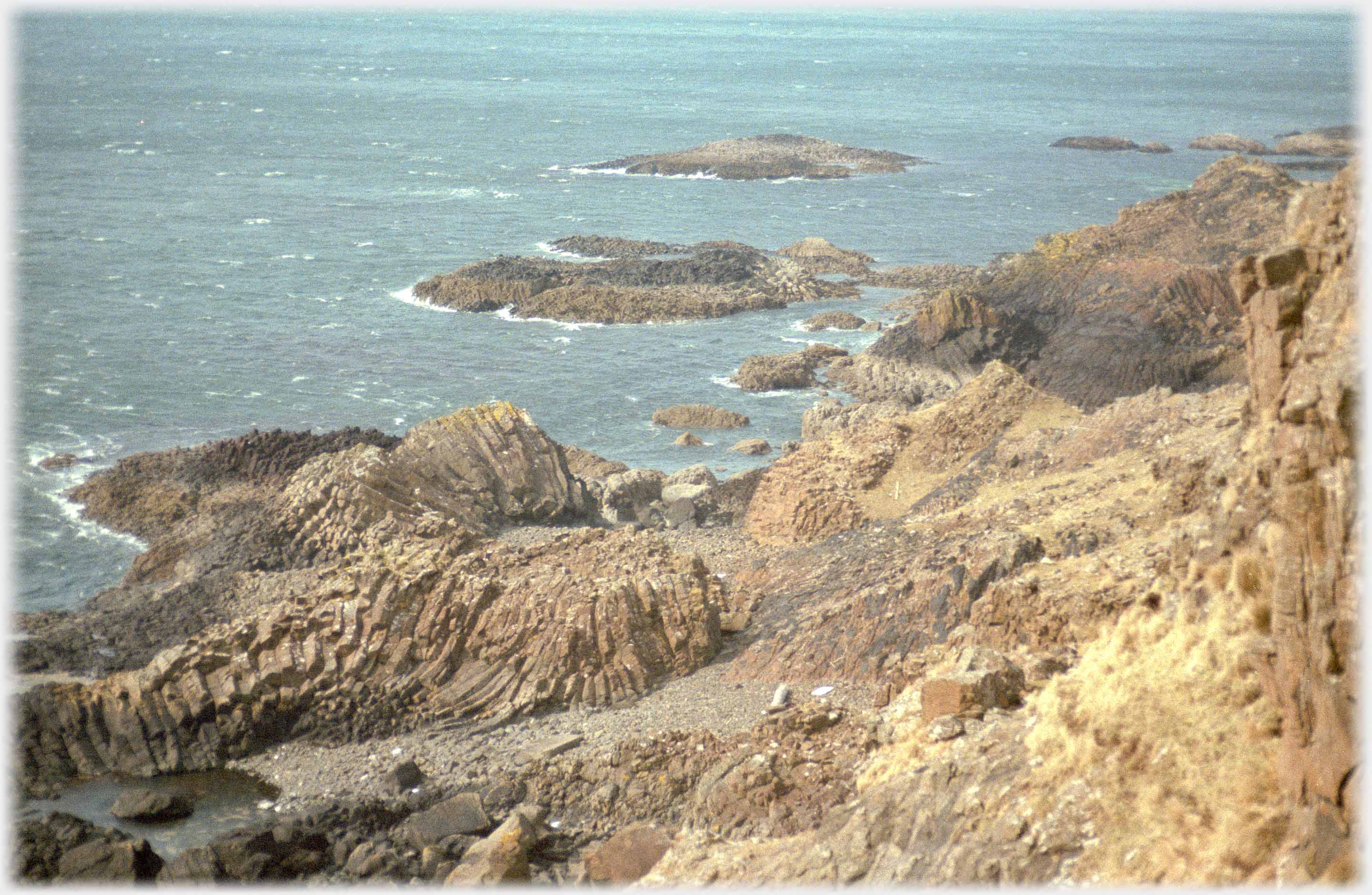 These are the rocks that lie at the foot of the cliffs. Because of the long walk, many people find it much easier to access the wealth of geology by taking a boat and so visiting Fingal's Cave on Staffa. That island lies about 6 miles out to sea from here. The whole headland of Ardmeanach has been owned by the Scottish National Trust since 1932 - known to them as 'Burg'
These are the rocks that lie at the foot of the cliffs. Because of the long walk, many people find it much easier to access the wealth of geology by taking a boat and so visiting Fingal's Cave on Staffa. That island lies about 6 miles out to sea from here. The whole headland of Ardmeanach has been owned by the Scottish National Trust since 1932 - known to them as 'Burg'
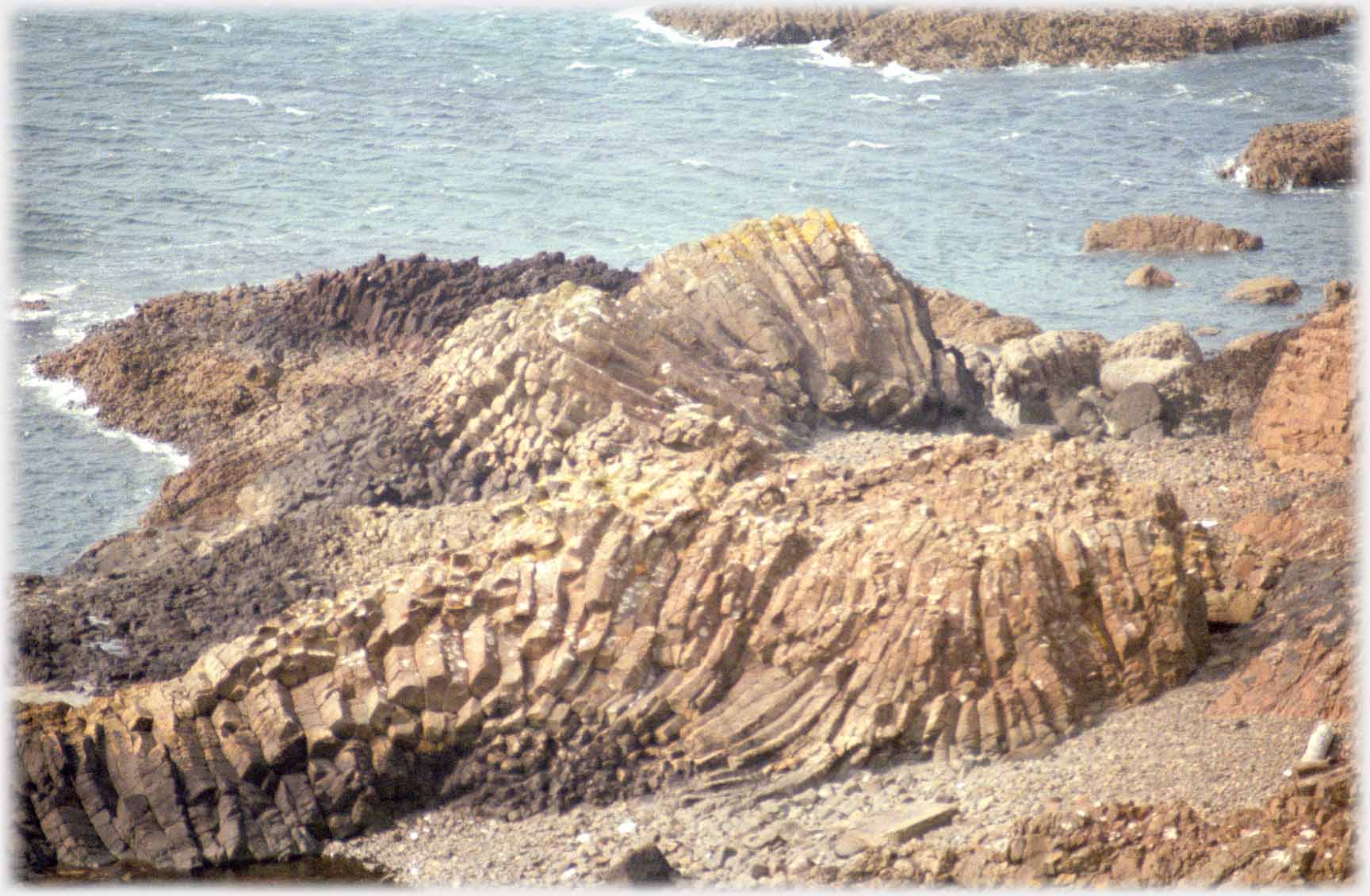 Two further views of that whirl...
Two further views of that whirl...
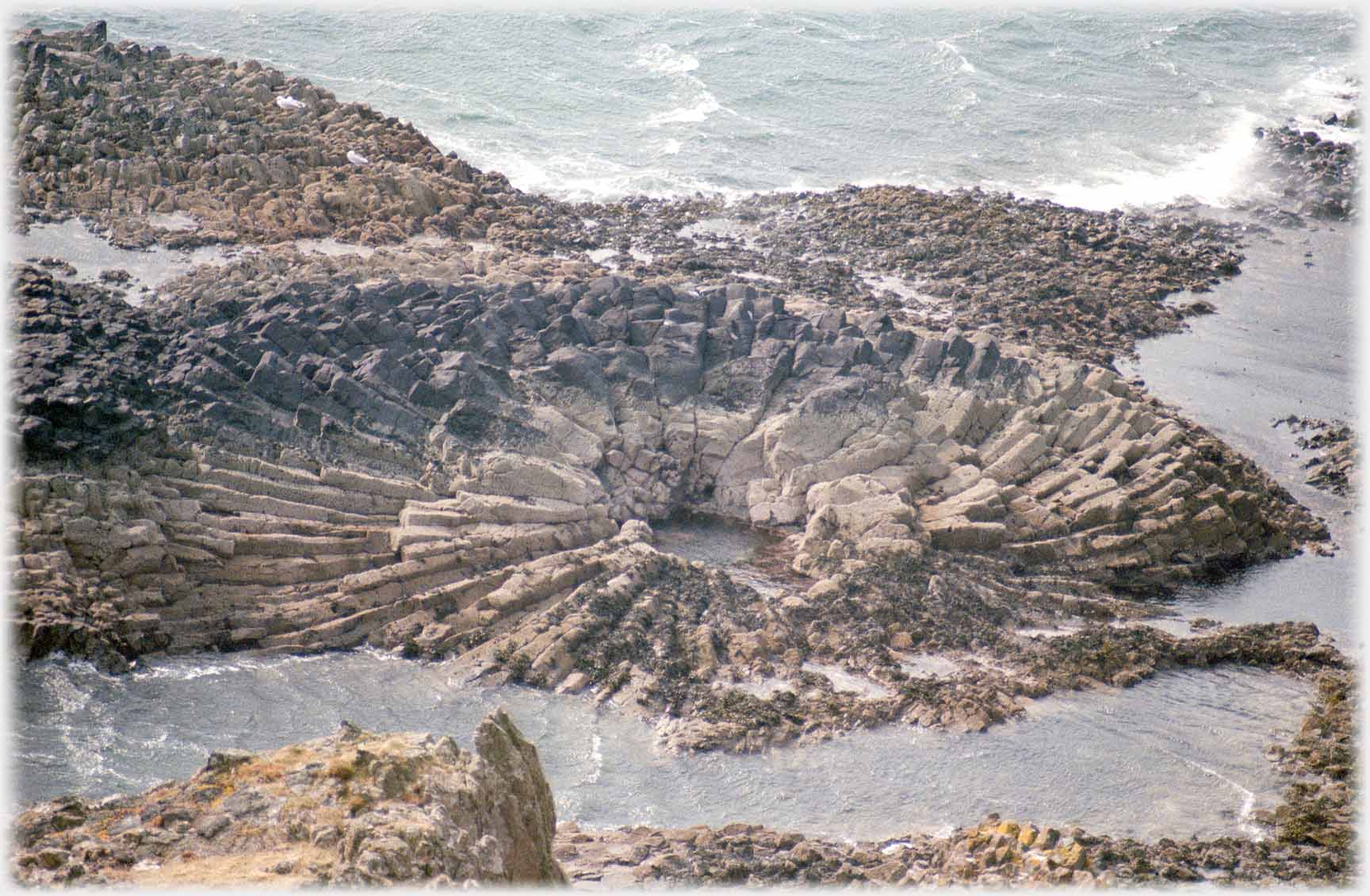 ... of fallen basalt columns
... of fallen basalt columns
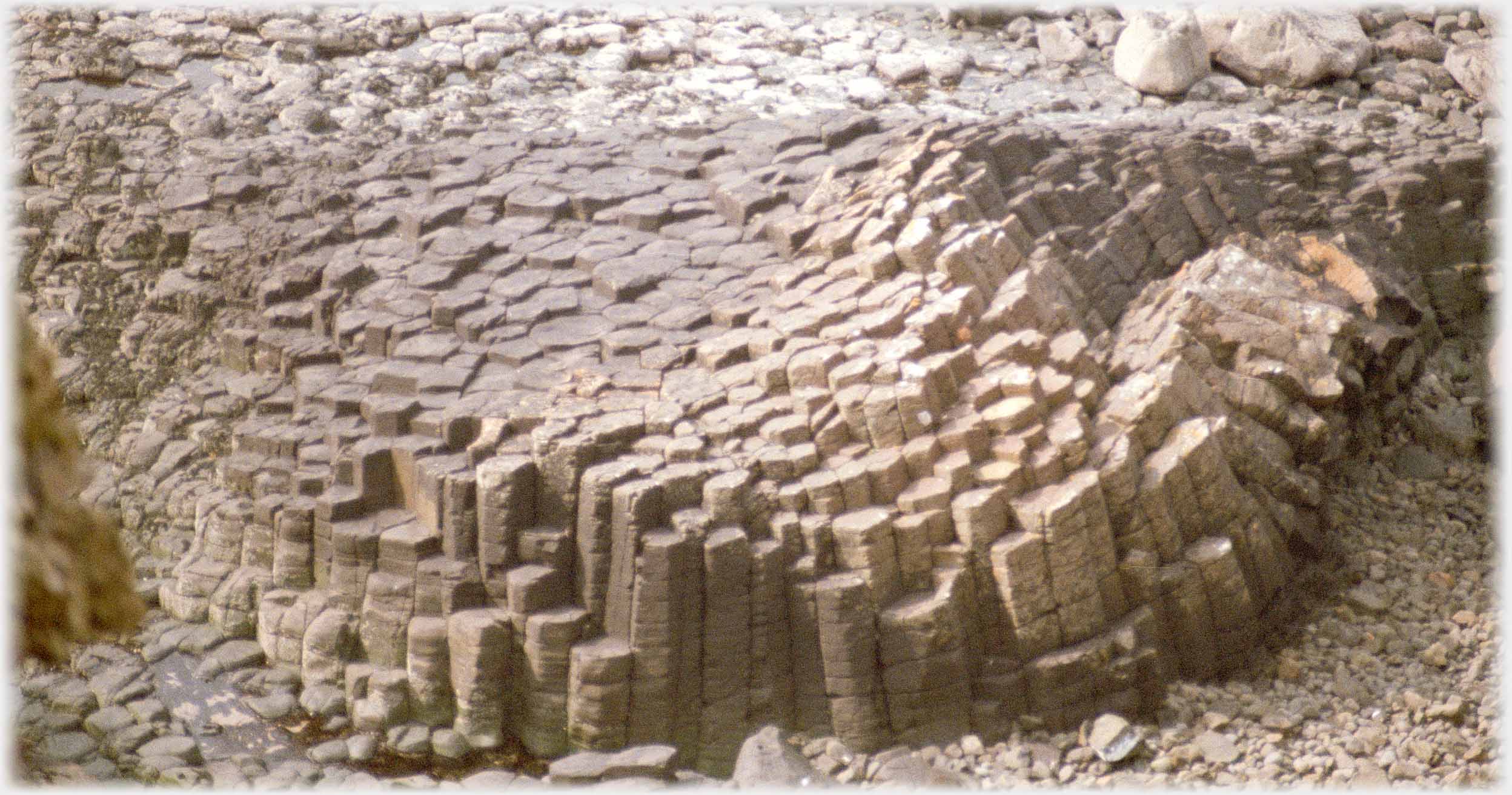 And here an un-fallen whirl, the columns are still standing together in a massed army
And here an un-fallen whirl, the columns are still standing together in a massed army
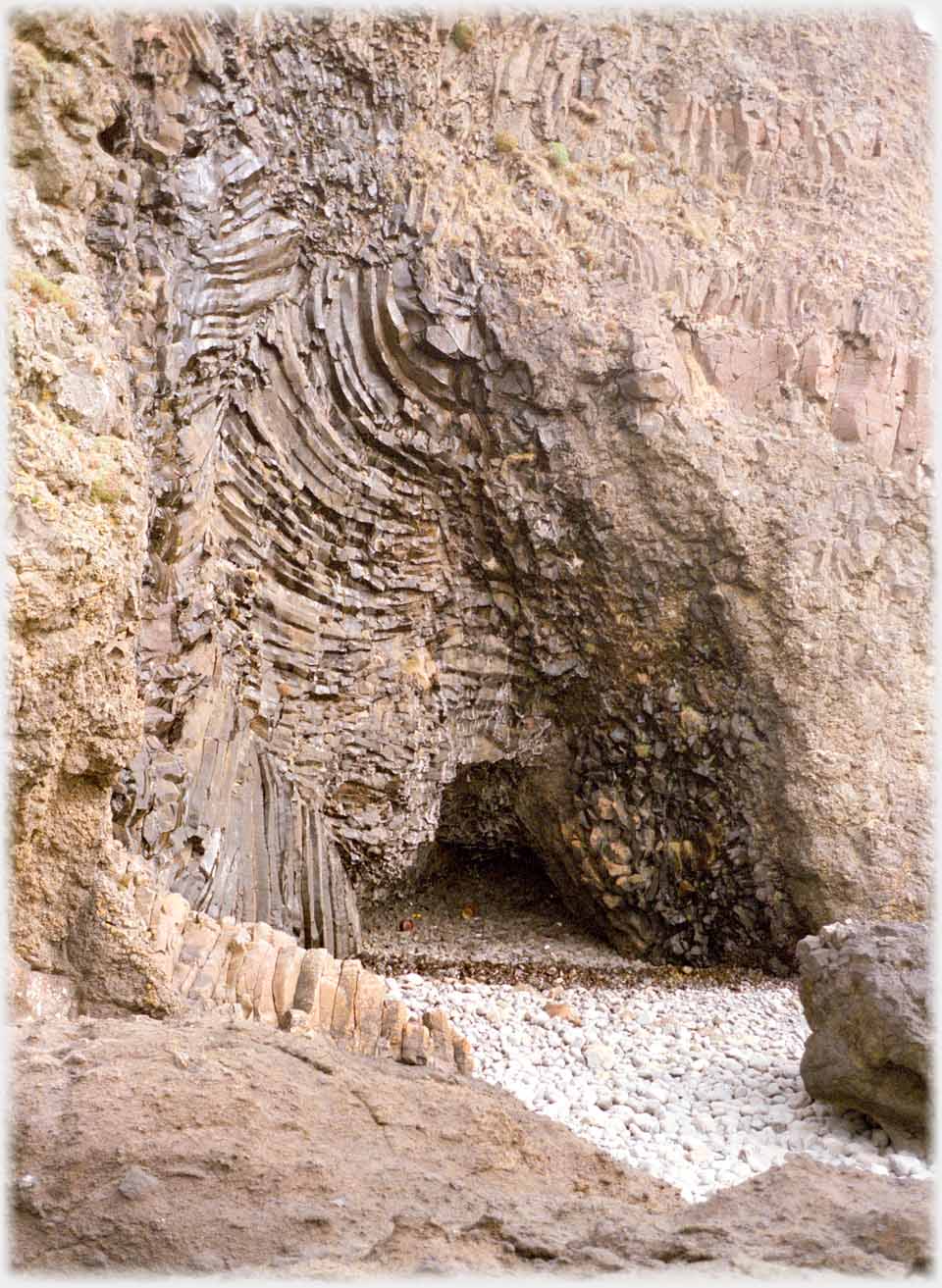 Tree patterned cliff face and cave
Tree patterned cliff face and cave
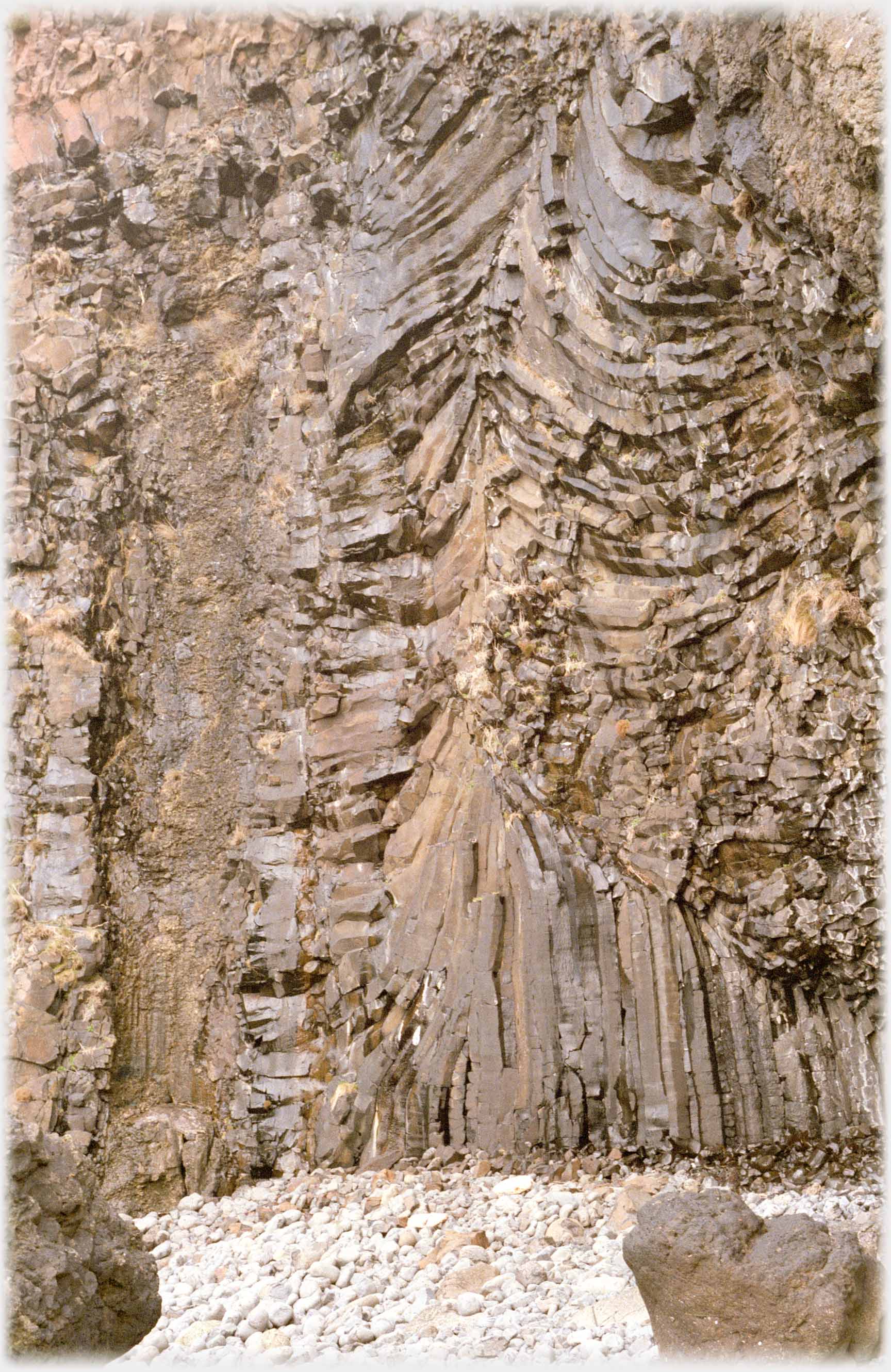 At the right of this photo is another tree patterned cliff face, and to the left, the column of the MacCulloch's Tree trunk - see the slight black vertical crack at the centre of its base...
At the right of this photo is another tree patterned cliff face, and to the left, the column of the MacCulloch's Tree trunk - see the slight black vertical crack at the centre of its base...
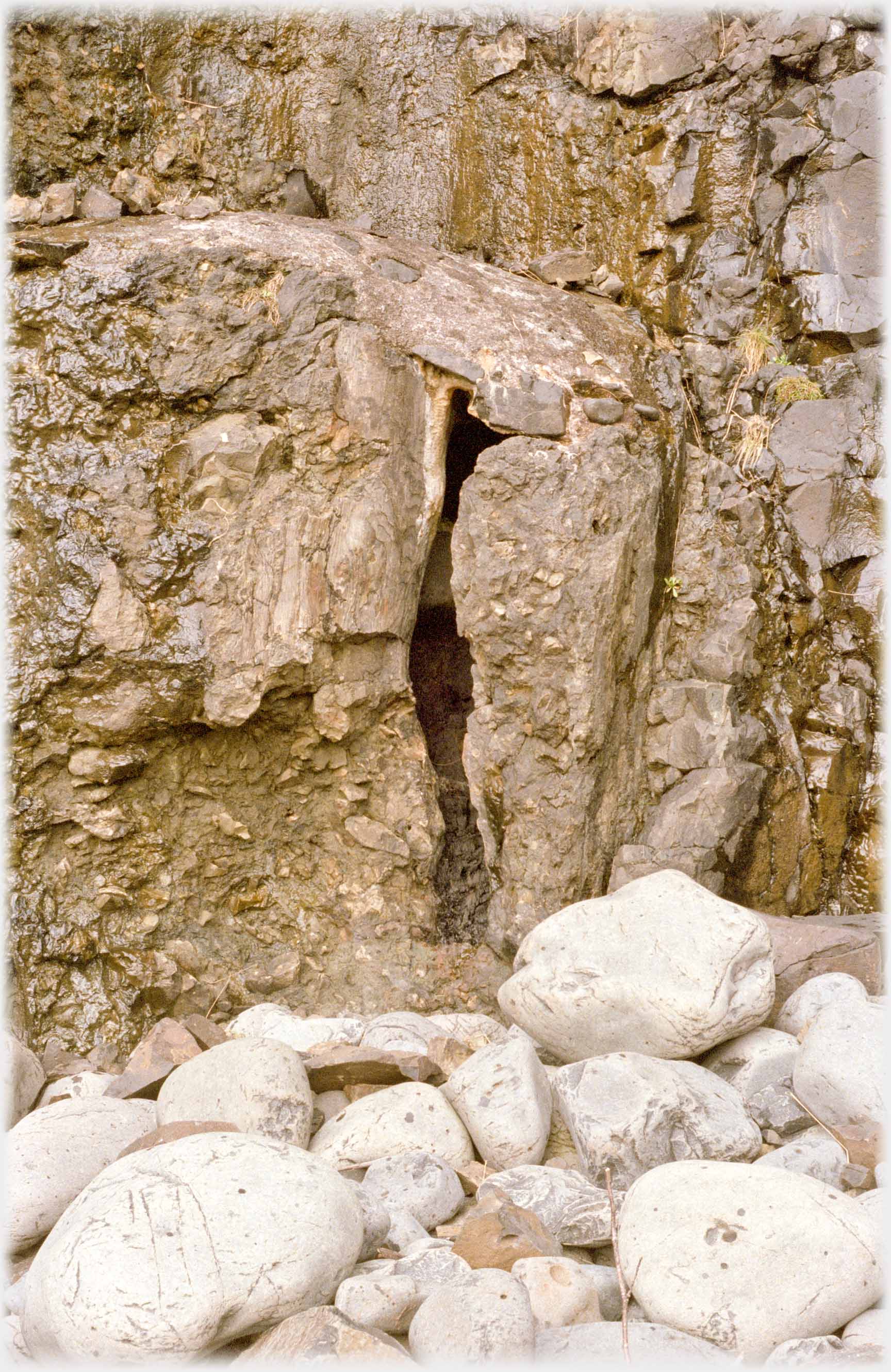 ...here it is enlarged. It is about a half metre in height with a concrete capping. The rock very nearly encircles the trunk - just leaving access to...
...here it is enlarged. It is about a half metre in height with a concrete capping. The rock very nearly encircles the trunk - just leaving access to...
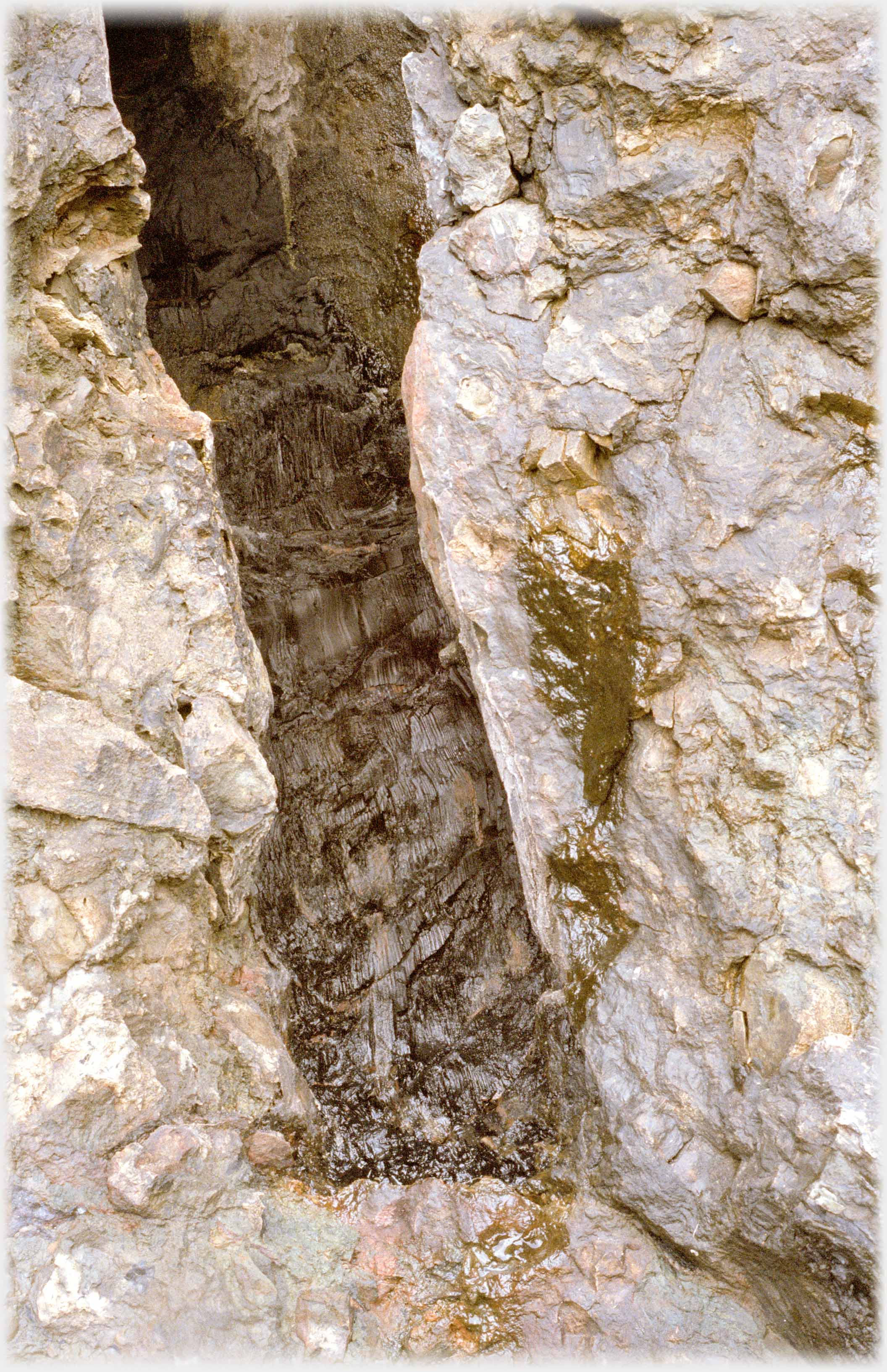 ...this sight. The dark material at the back of the cleft is soft charred wood. Exactly like wood from a bonfire, but 60 million years old. 'Recently' the front of the cliff, which would have completely encircled and protected the space of the tree trunk, must have fallen away leaving sufficient of the embers to be seen, but not immediately eroded, and at the right geological time to be exposed to human eyes. It is not a sight you can
...this sight. The dark material at the back of the cleft is soft charred wood. Exactly like wood from a bonfire, but 60 million years old. 'Recently' the front of the cliff, which would have completely encircled and protected the space of the tree trunk, must have fallen away leaving sufficient of the embers to be seen, but not immediately eroded, and at the right geological time to be exposed to human eyes. It is not a sight you can
see now, as it has been picked away by visitors.
The photograph was taken in 1987
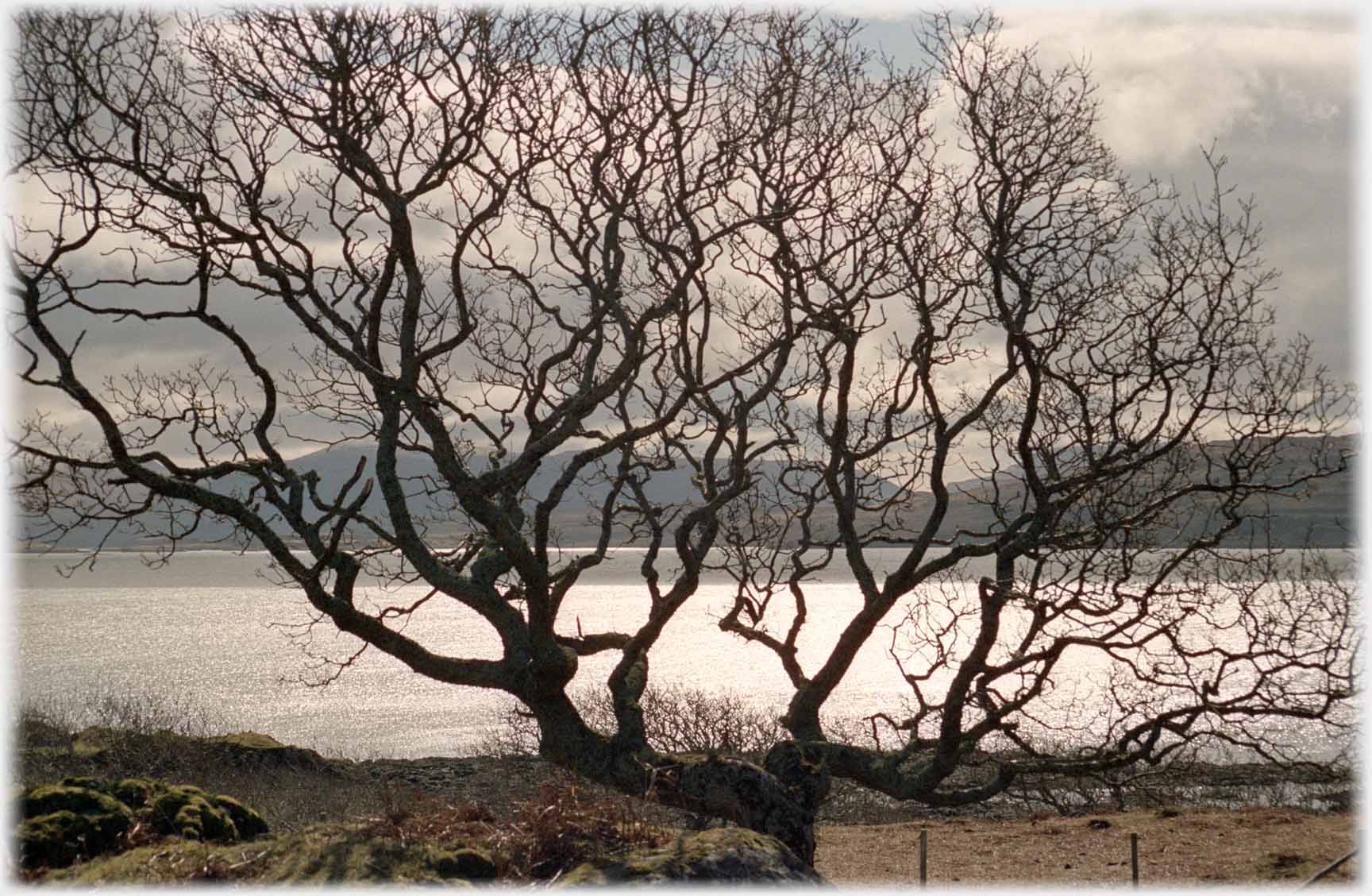 Filigree silhouette
Filigree silhouette
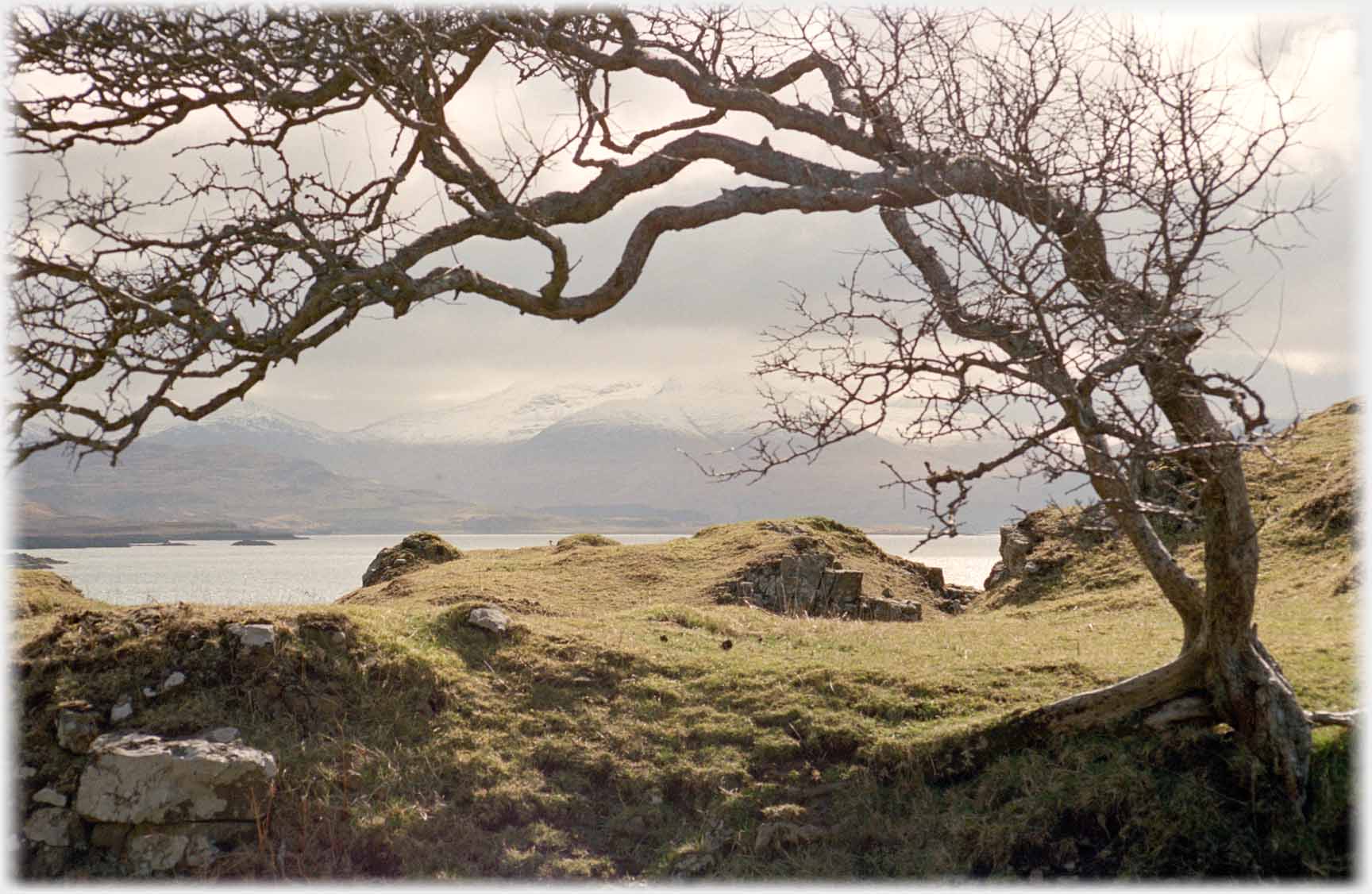 Trees know what a "weather man" knows about the wind
Trees know what a "weather man" knows about the wind
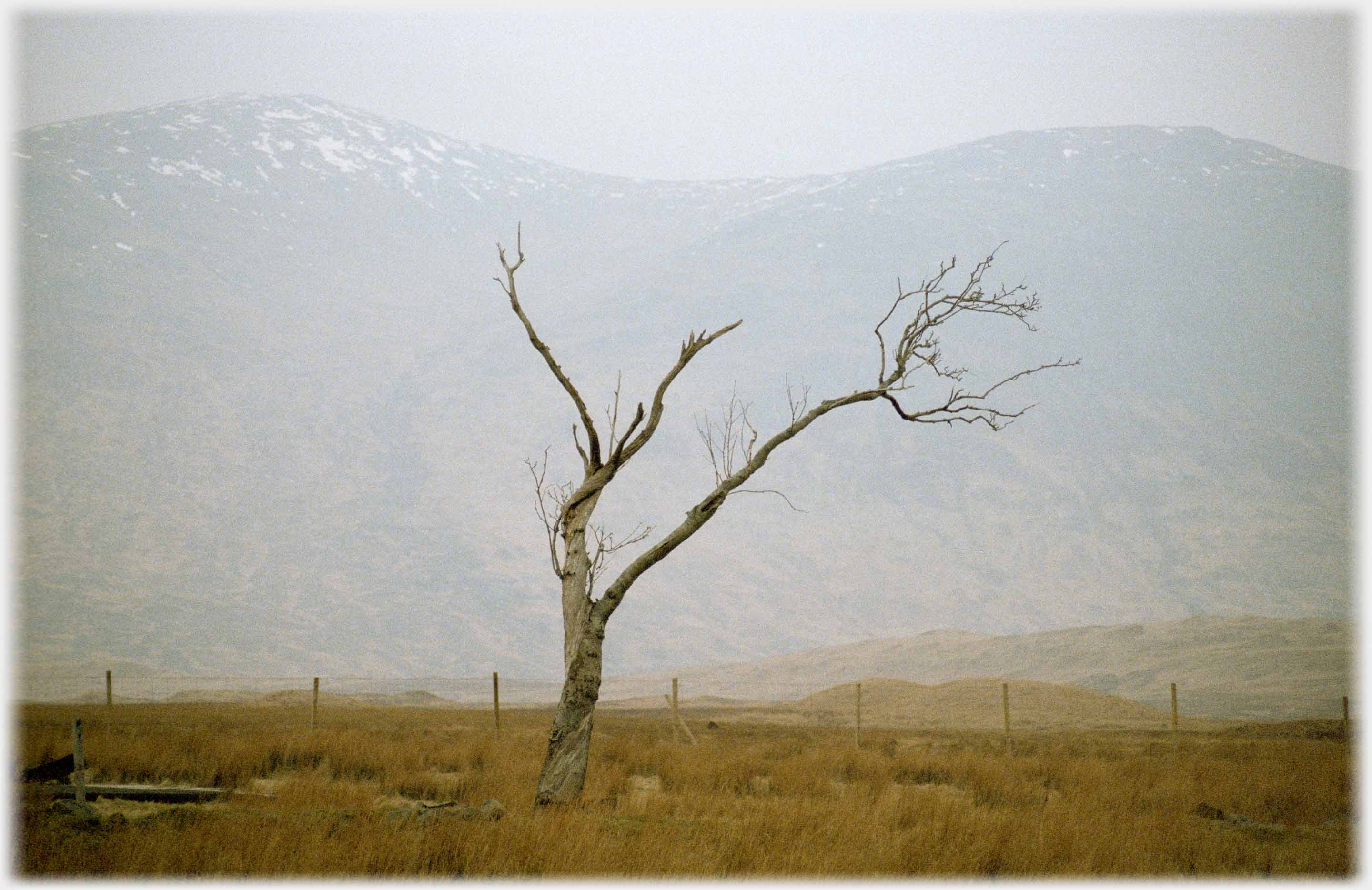 A tree which has not found a way to bend with the elements, and accordingly is suffering
A tree which has not found a way to bend with the elements, and accordingly is suffering
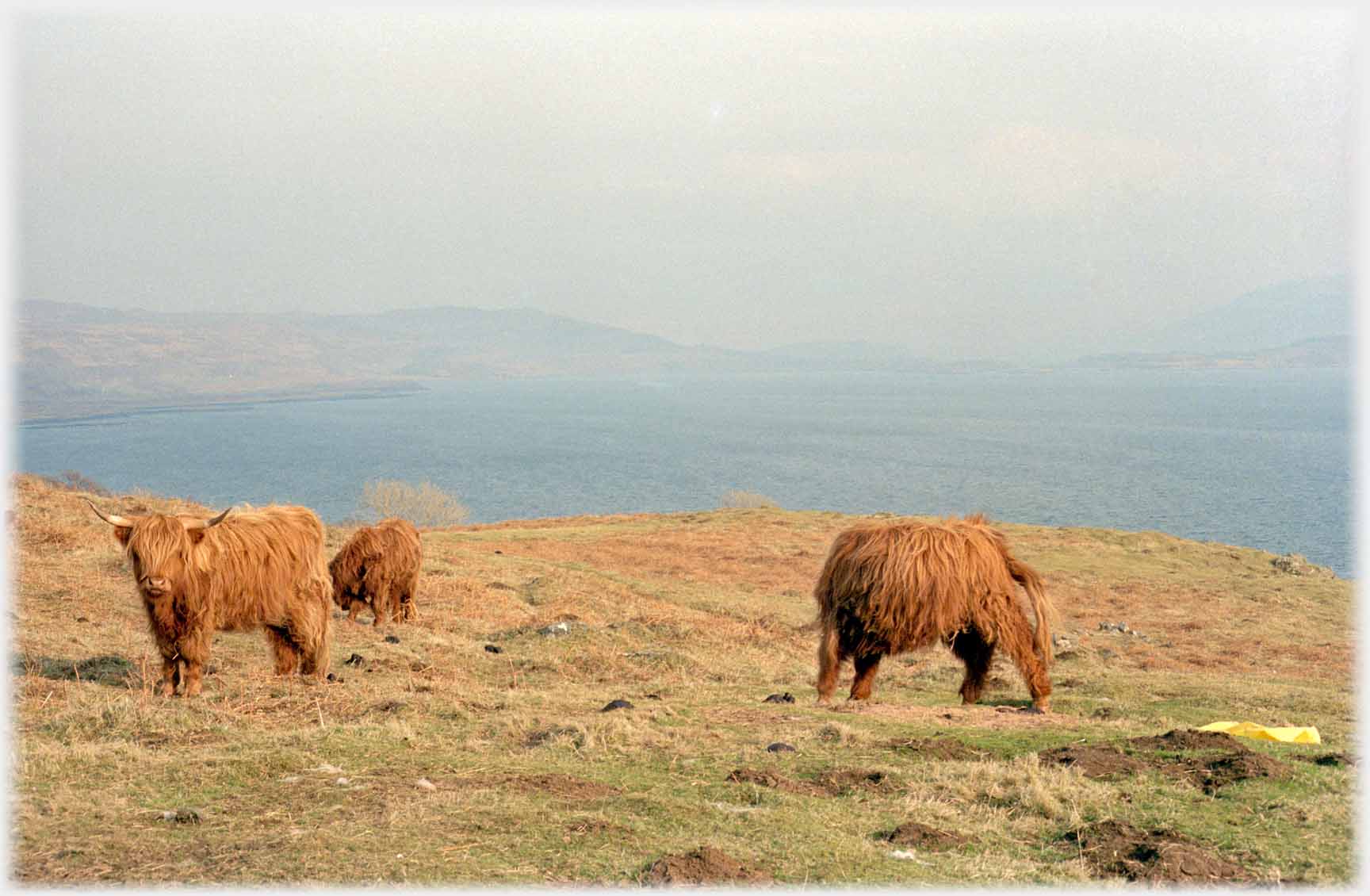 Of course Mull has fauna: from free grazing highland cattle...
Of course Mull has fauna: from free grazing highland cattle...
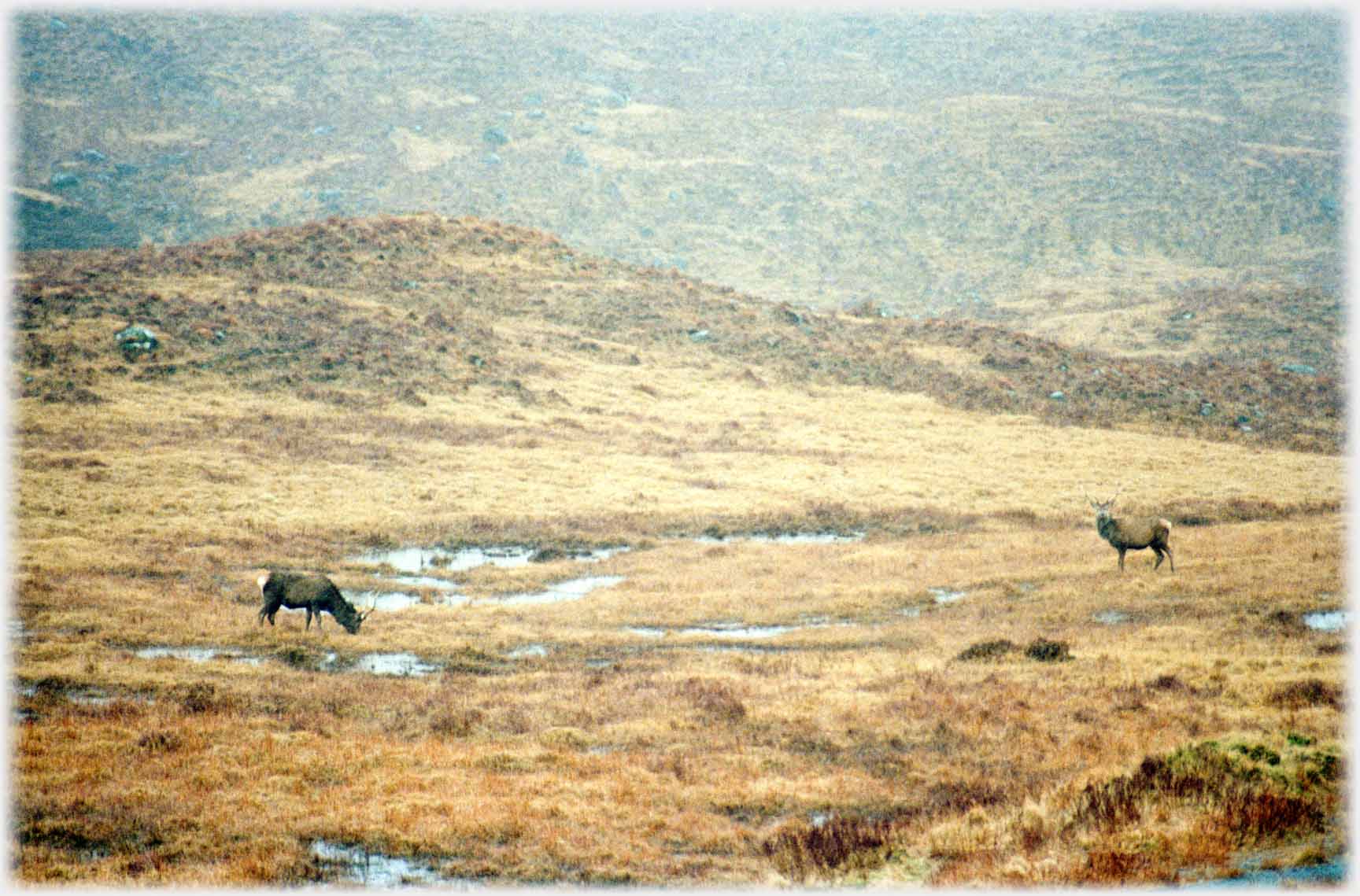 ...through red deer for the shoot...
...through red deer for the shoot...
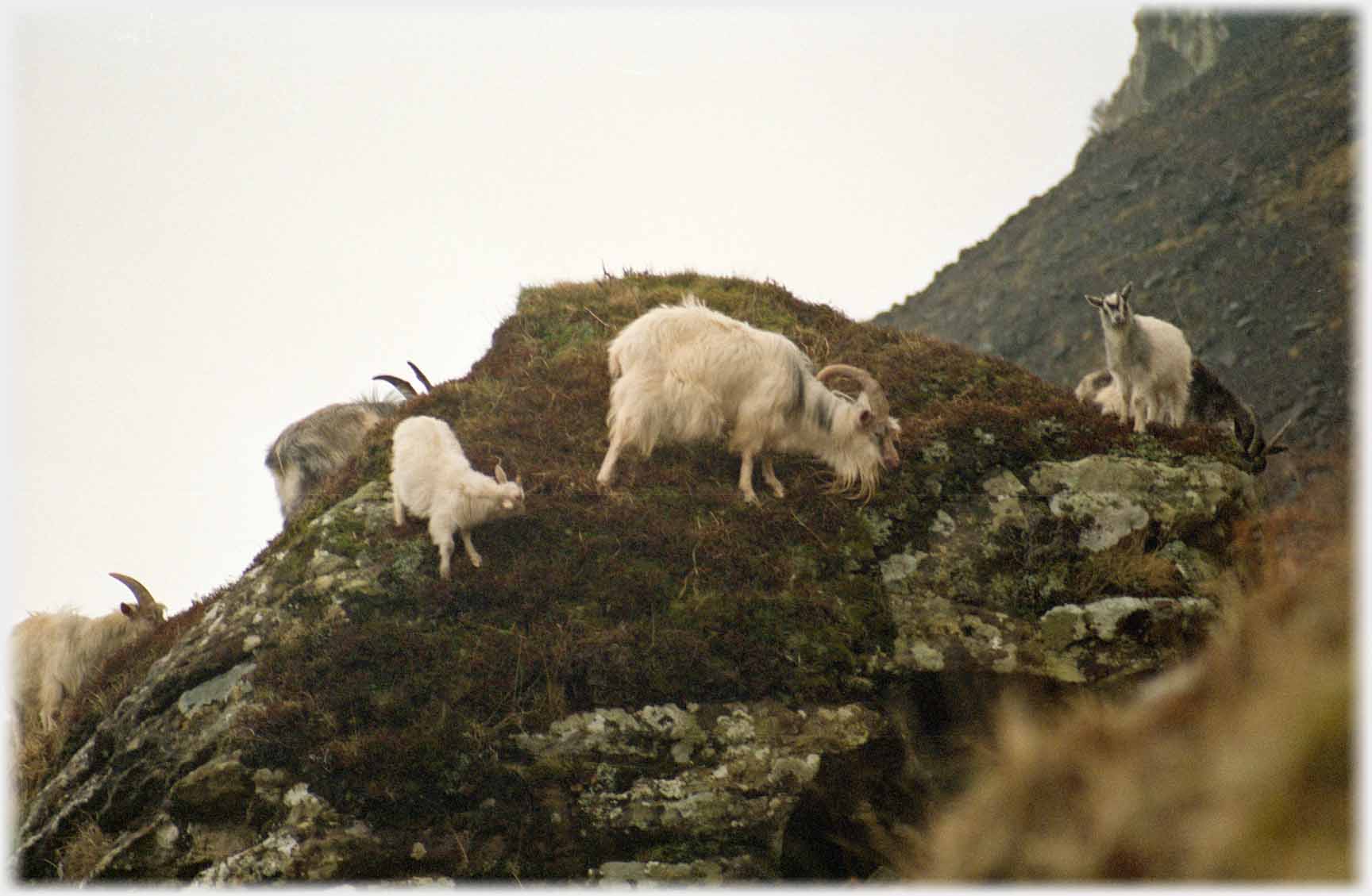 ...and wild goat families (culled by foresters)...
...and wild goat families (culled by foresters)...
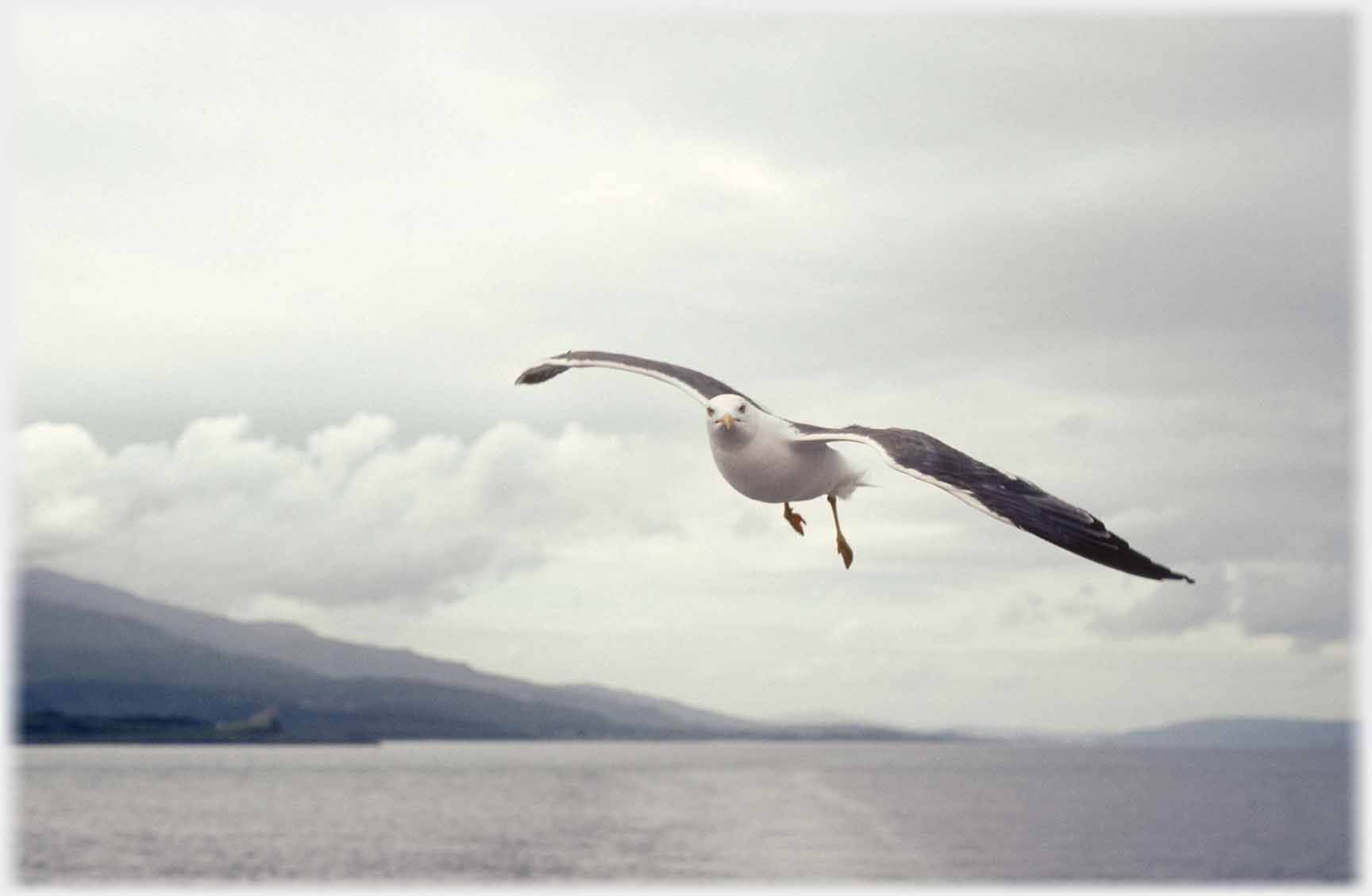 ...to black-backed gulls hanging in the air, hoping for tidbits
...to black-backed gulls hanging in the air, hoping for tidbits
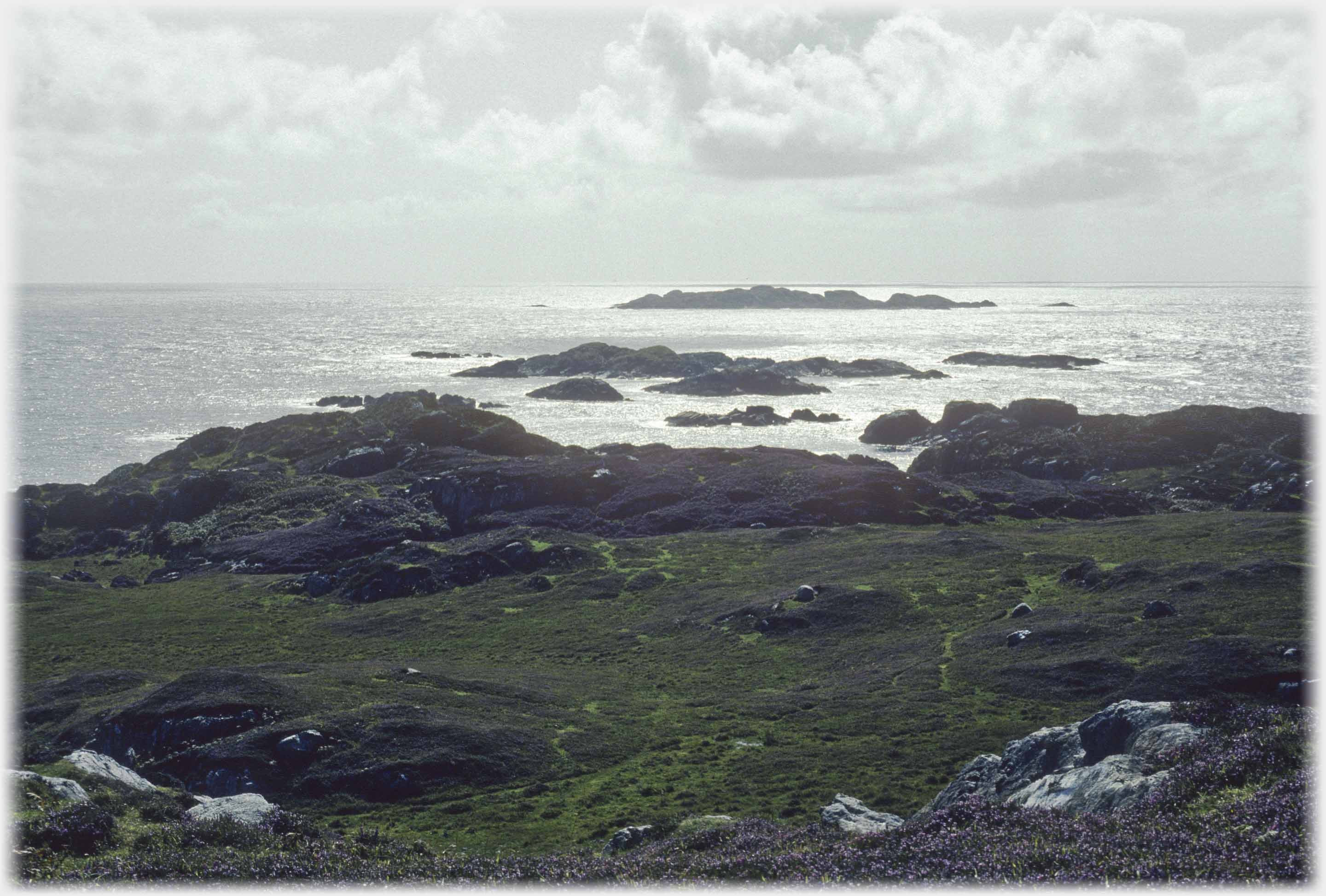 The end of Mull as it points out into the Atlantic Ocean
Trailers...
The end of Mull as it points out into the Atlantic Ocean
Trailers...
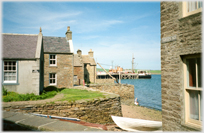 The next page of this section moves to another Scottish Island - Orkney.
The next page of this section moves to another Scottish Island - Orkney.
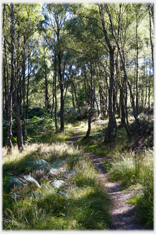 The next page
of the Mosaic Section is headed 'Beauty and the Noumenal'.
The next page
of the Mosaic Section is headed 'Beauty and the Noumenal'.
Or go to the contents Go to the contents of the Mosaic Section. of the Mosaic Section.

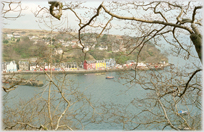 The last page had pictures of Mull's landscape
The last page had pictures of Mull's landscape
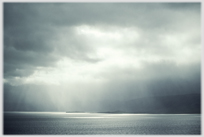 To rural Iceland and bigger waterfalls - near the bottom of the page
To rural Iceland and bigger waterfalls - near the bottom of the page
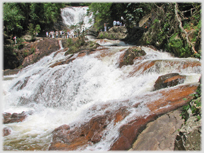 To Vietnam and waterfalls - often in the form of cascades
To Vietnam and waterfalls - often in the form of cascades
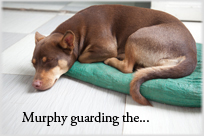 ...guide to this site
...guide to this site